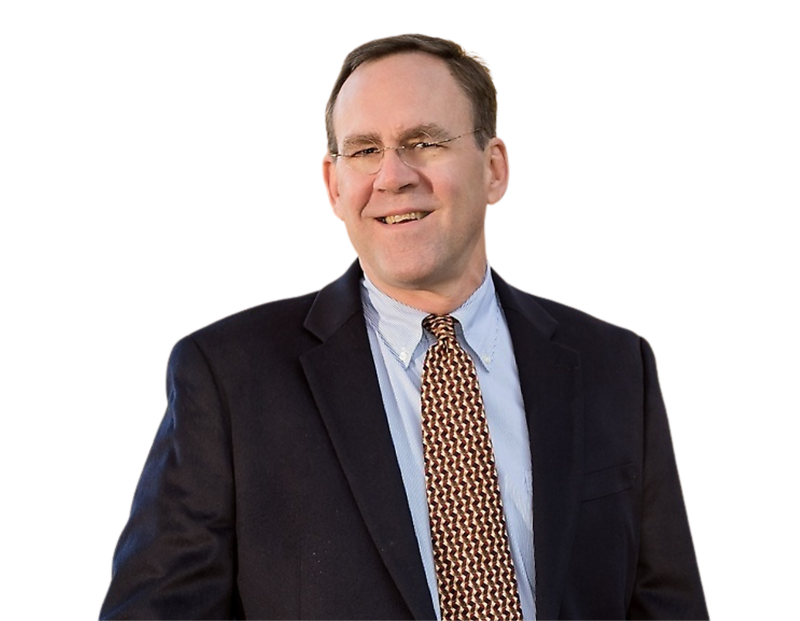The Families First Coronavirus Response Act is now law!
Yesterday the U.S. Senate passed the Families First Coronavirus Response Act, and President Trump reportedly signed it into law last night. Parts of the law expand the Family and Medical Leave Act, and require employers of fewer than 500 employees to provide paid leave, for certain time off related to coronavirus.
The final version of the FMLA expansion and paid leave legislation is identical to a narrower version that was passed by the House on Monday. The House had passed a much broader version over the weekend. The final version of the FMLA and paid leave provisions will take effect 15 days after enactment, which would appear to be April 2. Both provisions will expire after December 31, 2020.
In addition to the expansion of family and medical leave, and the requirement to provide paid leave, the Families First Act also provides for federal grants to state unemployment funds under certain circumstances, and allows employers to apply for tax credits to offset the cost of the paid leave.
The following is a summary of the provisions pertaining to family and medical leave, and to the paid leave requirements:
Emergency Family and Medical Leave Expansion Act
Under the final version of the legislation, employees are eligible for coronavirus-related FMLA leave after being employed by the employer for 30 calendar days. “Employer” is defined as an entity with fewer than 500 employees. The Secretary of Labor has authority to exclude health care providers and emergency responders from the definition of “eligible employee,” and to exempt businesses with fewer than 50 employees “when the imposition of such requirements would jeopardize the viability of the business as a going concern.” Moreover, the employer may elect to exclude certain health care providers and emergency responders.
In addition to the reasons set forth in the existing FMLA, eligible employees will be allowed to take leave for a “qualifying need due to a public health emergency,” which is defined as a COVID-19 emergency declared by a federal, state, or local authority.
However, the only “qualifying need” in the final version of the legislation is that the employee is unable to work or telework because the employee’s son or daughter under age 18 is home due to a school or child care center closure, or due to unavailability of a child care provider, because of a COVID-19 emergency.
It should be noted that if an employee is ill with coronavirus, or is caring for a spouse, parent, or child with coronavirus, the employee would qualify for “traditional” FMLA leave, assuming the employee was otherwise eligible. However, the new legislation does not address employees who are self-isolating, or who are out of work only because of exposure to COVID-19.
The first 10 days of COVID-19 leave may be unpaid, although employees would have the option to substitute accrued paid vacation, personal leave, or medical or sick leave.
After the first 10 days, the employer is required to pay for the leave, as follows:
-
Under normal circumstances, the paid leave would be two-thirds of the employee’s regular rate, multiplied by the number of hours that the employee would normally be scheduled to work.
◊ The amount of paid leave is capped at $200 a day, and $10,000 in the aggregate.
- If the employee works variable hours, the employer should calculate the average number of hours that the employee was scheduled to work for the six-month period ending on the date that the leave begins. This calculation must include hours for which the employee took “leave of any type.”
◊ If the employee works variable hours but has not worked for the employer for six months, the employer must use the number of hours that the employee reasonably would have expected to work at the time of hire.
Employees are required to provide the employer with as much notice as is practicable.
The “restoration” requirements are the same as those in the weekend version of the legislation. Generally, the employee must be restored to his or her job at the end of leave, or to a “substantially equivalent” position. However, if the employer has fewer than 25 employees, it will be excused from the restoration requirement if
-
The employee was on leave due to a public health emergency (as defined above),
-
The employee’s position no longer exists due to economic conditions or other changes in the operating conditions of the employer that affect employment, and are caused by a public health emergency during the period of leave,
-
The employer makes “reasonable efforts” to restore the employee to his or her old job or to a substantially equivalent position, and
-
If restoration is not possible after reasonable efforts, the employer makes “reasonable efforts” to restore the employee during the “contact period.” The “contact period” is one year, beginning with the earlier of (1) the date that the qualifying need due to a public health emergency expires, or (2) twelve weeks after the date that the public health emergency leave begins.
Unlike the weekend version of the legislation, the final version does not change the existing FMLA definitions of “family member,” “son or daughter,” or “parent.”
Emergency Paid Sick Leave Act
Under the final version of the Emergency Paid Sick Leave Act, paid sick leave is required when an employee is unable to work or telework for any of the following reasons:
-
The employee is under a federal, state, or local quarantine or isolation order because of COVID-19,
-
The employee is advised by a health care provider to self-quarantine because of COVID-19,
-
The employee has symptoms of COVID-19 and is seeking a medical diagnosis,
-
The employee is caring for an individual who meets one of the first two conditions, above,
-
The employee is caring for a son or daughter whose school or child care center is closed because of COVID-19 precautions, or whose child care provider is unavailable for the same reason, OR
-
“The employee is experiencing any other substantially similar condition specified by the Secretary of Health and Human Services in consultation with the Secretary of the Treasury and the Secretary of Labor.”
Employers can exclude health care providers and emergency responders from these provisions.
Full-time employees can receive a maximum of 80 hours (two workweeks) of paid leave. The entitlement for part-time employees is based on the number of hours worked, on average, in a two-week period. For employees with variable hours, the number of hours is calculated the same way it is for COVID-19 FMLA leave.
The paid leave must be made available immediately, regardless of the length of time that the employee has been employed by the employer. There is no carryover of unused paid leave from year to year, and employers are not required to pay out unused paid leave upon termination of employment.
Paid sick time is calculated as follows:
-
Generally, if the leave is taken because of the employee’s condition or situation, the greater of the employee’s regular rate, or the applicable federal, state, or local minimum wage.
◊ If the leave is taken because of the employee’s quarantine or isolation ordered by a government authority or health care provider, or the employee’s COVID-19 symptoms (and the employee is seeking a medical diagnosis), then the paid leave is capped at $511 a day, or $5,110 aggregated.
-
Generally, if the leave is taken so that the employee can care for another person, or pursuant to the “catchall” provision quoted above, the greater of two-thirds of the employee’s regular rate or applicable minimum wage.
◊ Paid leave under these circumstances is capped at $200 a day, or $2,000 aggregated.
Employers are not allowed to ask employees to find their own replacements to cover for the periods that they are on paid leave.
If the employer offers other types of paid leave, the employee can elect to use the “statutory” paid leave first. The employer may not require the employee to use other types of leave first.
It is a violation for an employer to discharge, discipline, or discriminate against an employee who has taken leave under this provision. It is also unlawful to take action against employees who engage in legally protected activity under this provision. (Interestingly, the legislation does not say “because” the employee took leave or engaged in protected activity under this provision.)
The law does not preempt other federal, or state or local, laws regarding paid leave; collective bargaining agreements; or existing employer policies.
The paid leave provisions apply to employees who meet the definition of “employee” for purposes of the Fair Labor Standards Act, and to government employers. A covered employer is engaged in commerce, and (if private sector) has fewer than 500 employees. In the public sector, an entity with one or more employees is a “covered employer.”
The law specifically provides that the definitions of “health care provider” and “son or daughter” are the same as those in the FMLA.
Employers will be required to post a notice relating to paid leave, and the Secretary of Labor is directed to create a notice within seven days of enactment (apparently one week from today). The Secretary is also directed to issue regulations to help employers calculate the amounts of paid sick time. That guidance must be issued within 15 days of enactment (apparently April 2). The Secretary is also empowered to issue regulations to exclude health care providers and emergency responders, to exempt employers with fewer than 50 employees, and as necessary to harmonize the paid leave provisions with the expanded FMLA and with Division G of the Families First legislation (addressing employer tax credits).
We will continue to update you as the Department of Labor issues regulations clarifying these provisions.
- Of Counsel & Chief Legal Editor
Robin also conducts internal investigations and delivers training for HR professionals, managers, and employees on topics such as harassment prevention, disability accommodation, and leave management.
Robin is editor in chief ...
This is Constangy’s flagship law blog, founded in 2010 by Robin Shea, who is chief legal editor and a regular contributor. This nationally recognized blog also features posts from other Constangy attorneys in the areas of immigration, labor relations, and sports law, keeping HR professionals and employers informed about the latest legal trends.





































